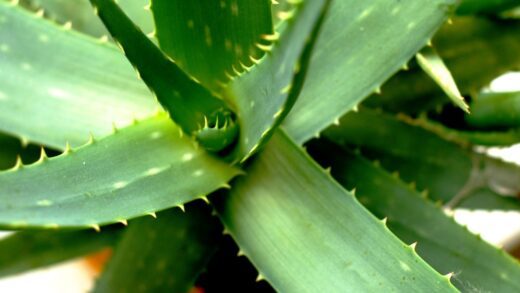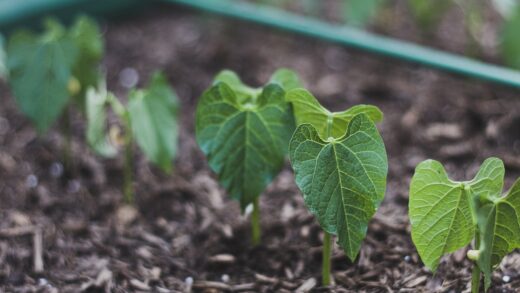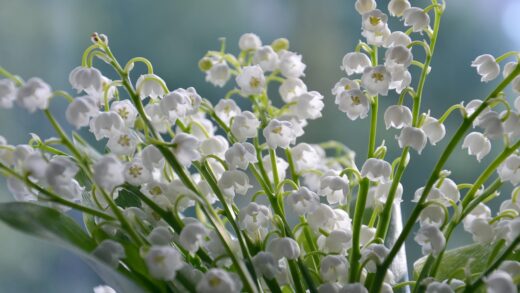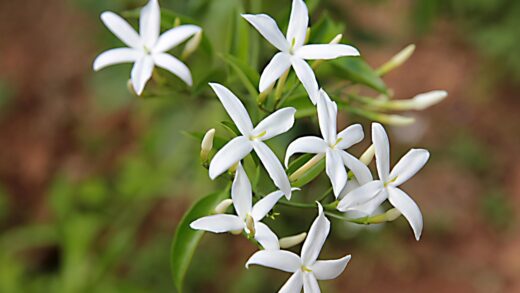Understanding the specific water requirements of the Japanese plum yew is fundamental to its cultivation, as this is the area where gardeners most often encounter issues. This resilient evergreen has a somewhat paradoxical nature when it comes to moisture: it prefers consistently moist, well-drained soil but demonstrates remarkable drought tolerance once its root system is fully established. The primary challenge lies in providing sufficient water for healthy growth without crossing the critical threshold into oversaturation, which can quickly lead to fatal root diseases. Mastering the art of irrigation for this plant involves learning to assess soil moisture, adapting to seasonal changes, and recognizing the crucial difference in needs between a newly planted shrub and a mature specimen.
Foundational watering principles for establishment
The first year in the ground is the most critical period for a Japanese plum yew’s water needs, as it is entirely focused on developing a robust root system that can sustain it for years to come. During this establishment phase, the plant is much more vulnerable to drying out than a mature specimen. Therefore, a consistent and deliberate watering schedule is essential. The goal is to keep the entire root zone evenly moist, but never soggy. A reliable rule of thumb is to provide a deep soaking, equivalent to about one inch of rainfall, once or twice a week, depending on your climate and soil type.
The method of watering is just as important as the frequency. It is far more beneficial to water deeply and infrequently than it is to water shallowly and often. Deep watering encourages the roots to grow downward in search of moisture, creating a more extensive and resilient root system. Shallow watering, in contrast, encourages roots to stay near the surface, making the plant more susceptible to drought stress. Using a soaker hose or letting a regular hose trickle slowly at the base of the plant for an extended period are excellent methods for delivering water directly to the root zone and minimizing evaporation.
Before watering, it is always best to check the actual moisture level of the soil. The “finger test” is a simple yet effective method: insert your finger into the soil near the base of the plant to a depth of two to three inches. If the soil feels dry at that depth, it is time to water. If it still feels moist, you can wait another day or two before checking again. This practice prevents the common mistake of watering on a rigid schedule without regard for recent rainfall or current weather conditions, thus avoiding the danger of overwatering.
A proper layer of organic mulch is an indispensable aid in managing moisture for a newly establishing plant. Applying a two- to three-inch layer of shredded bark, pine needles, or compost over the root zone insulates the soil from temperature extremes, reduces water loss through evaporation, and helps to suppress weeds that would otherwise compete for moisture. This simple step creates a more stable and favorable environment for root growth, reducing the overall watering frequency required and contributing significantly to the plant’s successful establishment.
More articles on this topic
Irrigation practices for mature plants
Once a Japanese plum yew has been in the ground for two or three years and has developed a comprehensive root system, its water needs change significantly. The plant becomes remarkably self-sufficient and drought-tolerant, capable of withstanding normal dry periods without supplemental irrigation. In many temperate climates, average rainfall is often sufficient to meet the needs of a mature, established plant. This low-water-need characteristic is one of the key attributes that makes it such a valuable and low-maintenance landscape shrub, particularly for water-wise gardening.
For established plants, supplemental watering is typically only necessary during prolonged and severe periods of drought, especially in the heat of summer. During such times, a deep, thorough soaking every few weeks is much more effective than more frequent, light applications of water. The objective is to replenish the moisture deep within the soil profile where the majority of the roots are located. A mature plant that shows signs of wilting or a slight graying of its foliage color is clearly indicating its need for water, and a deep irrigation session will help it recover and endure the continued dry spell.
The time of day you choose to water can also impact the health of a mature plant. The most efficient time to irrigate is early in the morning. Watering at this time allows the water to soak into the ground before the heat of the day increases evaporation rates, ensuring more water reaches the root zone. Furthermore, it allows the foliage to dry completely during the day, which helps to prevent the development of fungal diseases that can thrive in damp, stagnant conditions. Avoid overhead watering in the late evening, as this can leave the needles wet overnight, creating an inviting environment for pathogens.
Even with mature plants, it is crucial to remain vigilant about soil conditions, as a plant’s drought tolerance is directly linked to the health of its soil. Continuing to maintain a healthy layer of organic mulch around the base of the shrub will help conserve moisture in the soil for longer periods. Periodically check that the soil has not become compacted over time, as compacted soil sheds water rather than absorbing it. Aerating the surrounding soil if necessary can improve water penetration and ensure that when you do need to water, it is effective.
More articles on this topic
Adjusting watering for seasons and climate
Watering needs for the Japanese plum yew are not static; they fluctuate significantly with the changing seasons and vary widely depending on your specific climate. During the active growing season of spring and summer, when temperatures are higher and the plant is producing new growth, its water requirements are at their peak. Conversely, in the autumn and winter, as the plant enters dormancy and metabolic processes slow down, its need for water decreases dramatically. Adjusting your watering practices to align with these natural cycles is essential for the plant’s health.
In the autumn, it is beneficial to provide one or two deep waterings after the leaves of deciduous trees have fallen but before the ground freezes solid. This practice ensures the plant is well-hydrated heading into winter, which is particularly important for evergreens. A well-hydrated plant is much better equipped to handle the desiccating effects of cold winter winds and is less likely to suffer from winter burn. However, once the ground is frozen, supplemental watering should cease until the spring thaw.
Climate plays a defining role in irrigation strategies. In regions with hot, dry summers, even established plants will likely require some supplemental watering to prevent stress and maintain their best appearance. In contrast, in areas with cool, wet summers, supplemental irrigation may rarely, if ever, be necessary for mature specimens. Gardeners in sandy soils, which drain very quickly, will need to water more frequently than those with clay-based soils that retain moisture for longer periods. Understanding your local climate and soil type is key to developing an appropriate watering routine.
For plants grown in containers, seasonal adjustments are even more critical. The limited soil volume in a pot heats up and dries out very quickly in the summer sun, often requiring daily watering. In the winter, however, a containerized plant’s roots are more exposed to freezing, and the soil should be kept only slightly moist to prevent both complete desiccation and the risk of the pot cracking from frozen, waterlogged soil. Moving the container to a protected location and monitoring it carefully through the winter is a crucial seasonal adjustment.
The critical role of soil drainage
While discussing water requirements, it is impossible to overstate the importance of soil drainage. The Japanese plum yew’s deep-seated intolerance for waterlogged conditions means that no amount of careful irrigation can compensate for a planting site with poor drainage. If the soil is heavy, compacted clay that retains too much water, the spaces between soil particles become filled with water instead of oxygen. This lack of oxygen suffocates the roots, leading to their decay and creating a perfect entry point for opportunistic water-mold fungi like Phytophthora, which cause fatal root rot.
Improving soil drainage before planting is the most effective proactive measure a gardener can take. This can be achieved by incorporating significant amounts of organic matter, such as compost, aged pine bark, or leaf mold, into the native soil. These materials help to bind small clay particles into larger aggregates, creating more pore space for air and allowing excess water to move through the soil profile more freely. In situations with persistently poor drainage, it may be necessary to plant the shrub in a raised bed or on a gently sloping berm, which physically elevates the root ball above the surrounding waterlogged soil.
The physical structure of the planting area can also influence drainage. Avoid planting the Japanese plum yew in a low-lying depression or swale where water naturally collects after rainfall. Similarly, be mindful of runoff from downspouts or impervious surfaces like driveways and patios, which can channel excessive amounts of water toward the plant. Selecting a site on level ground or a slight slope ensures that surface water will drain away from the plant’s base rather than pooling around it.
Observing how your garden responds to heavy rain is a good way to assess drainage patterns. Look for areas where puddles remain for extended periods after a storm has passed; these are unsuitable locations for a Japanese plum yew. A healthy, well-draining soil should be able to absorb a significant amount of rainfall without becoming a swamp. By prioritizing drainage above all else, you create a foundational environment where the plant’s roots can thrive, making it far more resilient and forgiving when it comes to irrigation practices.
Recognizing signs of water stress
Learning to read the visual cues of your Japanese plum yew is a vital skill for managing its water needs effectively. Both overwatering and underwatering can cause visible symptoms of stress, and correctly interpreting these signs is key to applying the right remedy. The most common sign of underwatering, particularly in young or recently transplanted shrubs, is a slight drooping or wilting of the foliage, which may be accompanied by a loss of luster, with the needles taking on a dull, grayish-green hue. In severe cases, the needle tips may begin to turn brown and feel dry and brittle to the touch.
Paradoxically, the symptoms of overwatering can look strikingly similar to those of underwatering, which often confuses gardeners. A plant suffering from root rot due to excessive moisture cannot effectively absorb water and nutrients, leading to wilting, yellowing foliage (chlorosis), and eventual branch dieback. The key difference to look for is the condition of the soil. If the plant is wilting but the soil around it is consistently damp or wet, overwatering and root rot are the almost certain culprits. This is a far more serious condition than temporary drought stress and is much more difficult to correct.
A healthy, well-watered Japanese plum yew will have turgid, deep green needles with a healthy sheen. New growth in the spring will be a vibrant, lighter green and feel soft and flexible. If you notice that new growth is stunted, sparse, or fails to appear at all, it can be an indication of chronic water stress, either too much or too little over a long period. This lack of vigor is a clear sign that the root system is not functioning optimally and that a thorough assessment of the soil moisture conditions and drainage is warranted.
When you see a sign of stress, resist the urge to immediately apply a generic solution. Instead, investigate the root cause by examining the soil, reviewing your recent watering habits, and considering the recent weather patterns. Has there been a prolonged drought? Or has there been an unusually rainy period? By combining visual observation of the plant with a practical assessment of its environment, you can accurately diagnose the problem and take the appropriate corrective action, whether it’s providing a deep, restorative drink or improving drainage to save it from excess moisture.
📷: A. Barra, CC BY-SA 4.0, via Wikimedia Commons


















